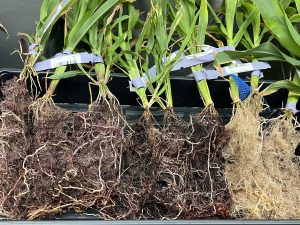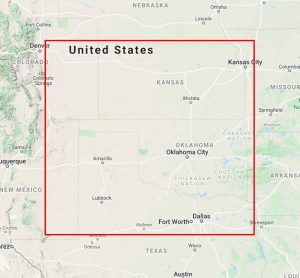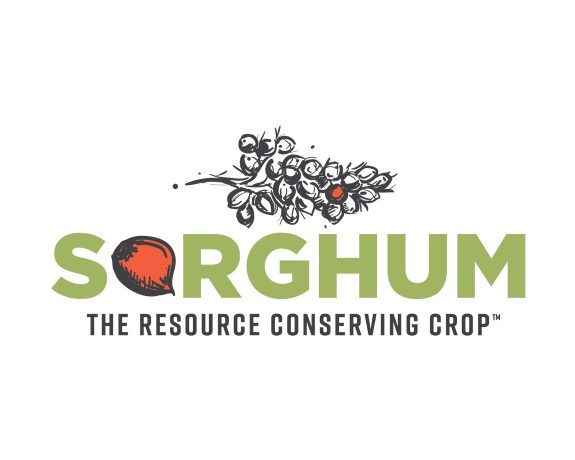Project Overview
Background
Annually planted on just over 100 million acres, Sorghum, The Resource Conserving Crop™, is the world’s fifth-most important cereal grain. The crop has a long history of being grown in harsh environments to provide nourishment to people and animals, and the earliest known genetic material dates to 8,000 BCE. This survival over 10,000 years of climatic volatility highlights the resilient nature of the crop and serves as a constant reminder of the opportunity for farmers willing to leverage sorghum’s climate-smart characteristics. Almost 75 percent of U.S. sorghum acres are in conservation tillage already, and this fact makes the crop’s farmers the undisputed global leaders in climate stewardship.
 When added to a rotation, sorghum decreases the overall carbon intensity of crop production owing to its large carbon-sequestering root system and the cover it creates above ground, which reduces the need for tillage and helps reduce the runoff of harmful nitrates. The crop is also a water-sipper, using one-third less water than corn and requiring less energy for pumping in irrigated production systems. These advantages combined mean lower carbon intensity relative to baseline irrigated crop production, for example, of 43 percent. Accordingly, sorghum is itself a highly impactful tool for farmers interested in driving positive climate outcomes.
When added to a rotation, sorghum decreases the overall carbon intensity of crop production owing to its large carbon-sequestering root system and the cover it creates above ground, which reduces the need for tillage and helps reduce the runoff of harmful nitrates. The crop is also a water-sipper, using one-third less water than corn and requiring less energy for pumping in irrigated production systems. These advantages combined mean lower carbon intensity relative to baseline irrigated crop production, for example, of 43 percent. Accordingly, sorghum is itself a highly impactful tool for farmers interested in driving positive climate outcomes.
Overview of Technical Approach
Our approach will focus on quantifying the climate impact of incorporating sorghum and other tools into rotations in carbon-equivalent terms. Rather than focusing on soil carbon sequestration alone, we will create a pathway for the impact of all practices to be quantified, tracked and verified with the intent to monetize these practices in ecosystems services markets. Payments will be made to producers to introduce sorghum along with a suite of additional practices. A strong measurement and quantification program will accompany these payments in order to highlight the climate impacts of the associated practices.
Our technical program will center specifically on enabling farmers to take advantage of added value under the California Low Carbon Fuel Standard as this market requires the most rigid measurement/quantification, monitoring, reporting and verification systems and already consumes up to one-third of the U.S. sorghum crop annually.
Diversity and Community Outreach Program
Our diversity and community outreach program will focus on in-reach and outreach to under-served communities in our target area with a primary focus of creating opportunities for under-served farmers to participate in climate smart sorghum production and realize the benefits of ecosystems services markets.
Target Geography
 The target geography will include portions of six states and cover an average of 67 percent of the sorghum industry, or 4.4 million acres. The area includes more than 20,000 sorghum farmers and is vitally important to U.S. agriculture. Irrigated agriculture in this area is particularly important and highly threatened, and sorghum has a key role to play in prolonging irrigated agriculture in the region. Furthermore, the U.S. High Plains is the world’s leading region for nitrogen use efficiency and mitigation of nitrate leaching, volatilization and runoff. Sorghum is a primary tool in these efforts, so incorporating the crop into rotations in this region can improve the carbon footprint of U.S. agriculture overall.
The target geography will include portions of six states and cover an average of 67 percent of the sorghum industry, or 4.4 million acres. The area includes more than 20,000 sorghum farmers and is vitally important to U.S. agriculture. Irrigated agriculture in this area is particularly important and highly threatened, and sorghum has a key role to play in prolonging irrigated agriculture in the region. Furthermore, the U.S. High Plains is the world’s leading region for nitrogen use efficiency and mitigation of nitrate leaching, volatilization and runoff. Sorghum is a primary tool in these efforts, so incorporating the crop into rotations in this region can improve the carbon footprint of U.S. agriculture overall.



 When added to a rotation, sorghum decreases the overall carbon intensity of crop production owing to its large carbon-sequestering root system and the cover it creates above ground, which reduces the need for tillage and helps reduce the runoff of harmful nitrates. The crop is also a water-sipper, using one-third less water than corn and requiring less energy for pumping in irrigated production systems. These advantages combined mean lower carbon intensity relative to baseline irrigated crop production, for example, of 43 percent. Accordingly, sorghum is itself a highly impactful tool for farmers interested in driving positive climate outcomes.
When added to a rotation, sorghum decreases the overall carbon intensity of crop production owing to its large carbon-sequestering root system and the cover it creates above ground, which reduces the need for tillage and helps reduce the runoff of harmful nitrates. The crop is also a water-sipper, using one-third less water than corn and requiring less energy for pumping in irrigated production systems. These advantages combined mean lower carbon intensity relative to baseline irrigated crop production, for example, of 43 percent. Accordingly, sorghum is itself a highly impactful tool for farmers interested in driving positive climate outcomes. The target geography will include portions of six states and cover an average of 67 percent of the sorghum industry, or 4.4 million acres. The area includes more than 20,000 sorghum farmers and is vitally important to U.S. agriculture. Irrigated agriculture in this area is particularly important and highly threatened, and sorghum has a key role to play in prolonging irrigated agriculture in the region. Furthermore, the U.S. High Plains is the world’s leading region for nitrogen use efficiency and mitigation of nitrate leaching, volatilization and runoff. Sorghum is a primary tool in these efforts, so incorporating the crop into rotations in this region can improve the carbon footprint of U.S. agriculture overall.
The target geography will include portions of six states and cover an average of 67 percent of the sorghum industry, or 4.4 million acres. The area includes more than 20,000 sorghum farmers and is vitally important to U.S. agriculture. Irrigated agriculture in this area is particularly important and highly threatened, and sorghum has a key role to play in prolonging irrigated agriculture in the region. Furthermore, the U.S. High Plains is the world’s leading region for nitrogen use efficiency and mitigation of nitrate leaching, volatilization and runoff. Sorghum is a primary tool in these efforts, so incorporating the crop into rotations in this region can improve the carbon footprint of U.S. agriculture overall.